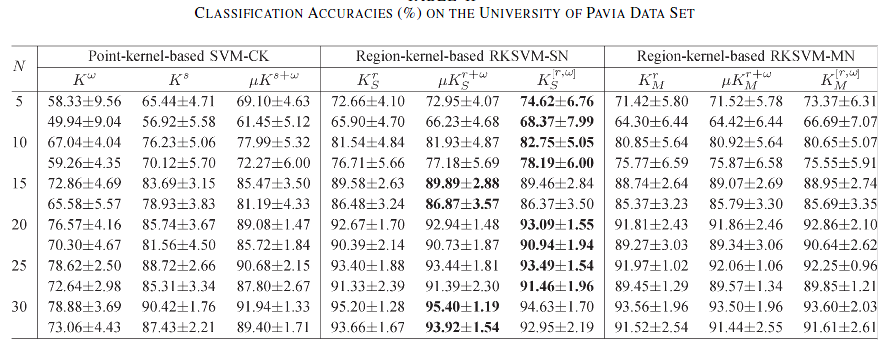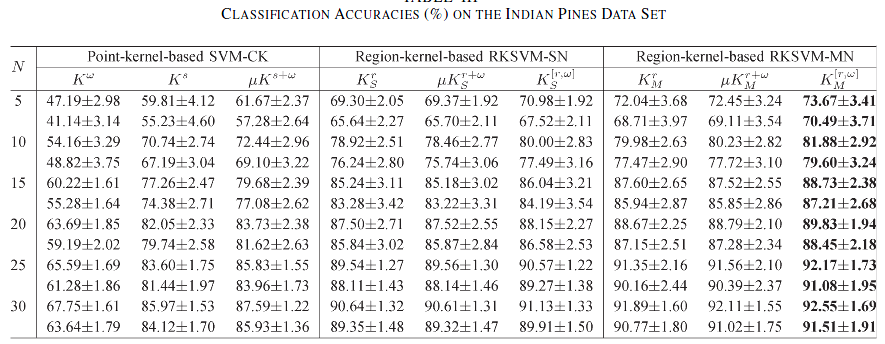Region-Kernel-based Support Vector Machines for Hyperspectral Image Classification
Project summary:
In this paper, based on the HSI spatial homogeneous regions and the kernel similarity metric, we propose a region-kernel based SVM (RKSVM) to classify the local homogeneous region of each HSI pixel. In the region classification, a key point is to measure the distance or the similarity between different regions, which is achieved by a novel region kernel in RKSVM. In detail, for each pixel x (spectral curve vector), a corresponding local region R containing x and its spatial neighbors is generated from either a distance similarity neighborhood or an area-filtering-based morphological neighborhood. As the local homogeneous distribution of an HSI, pixel x and its spatial neighbors show similar spectral features. That is, the spectral values of pixels in the local region R change in a small range. Based on the range of spectral values in each band, it can determine an interval in each band and hence a regular box to be the Cartesian product of multiple intervals, which reflects the spectral variations of local homogeneous pixels in the region. To describe spectral variations more accurately and stably, multiscale boxes with different sizes are generated. For different regions, we can construct multiscale boxes for each region separately and compute the corresponding pairwise boxto-box similarities of different regions by means of box kernels. Then, the similarity between different regions is defined as a weighted average of pairwise box-to-box kernels, which is called the region kernel in this paper. Based on the region similarity metric, we can classify HSI regions.
 |
| Figure 1. Flowchart of the proposed RKSVM classification system. |
Experimental results:
 |
 |
Reference:
Jiangtao Peng, Yicong Zhou*, and C. L. Philip Chen, “Region-Kernel-based Support Vector Machines for Hyperspectral Image Classification,” IEEE Transactions on Geoscience and Remote Sensing, vol. 53, no. 9, pp. 4810–4824, 2015.